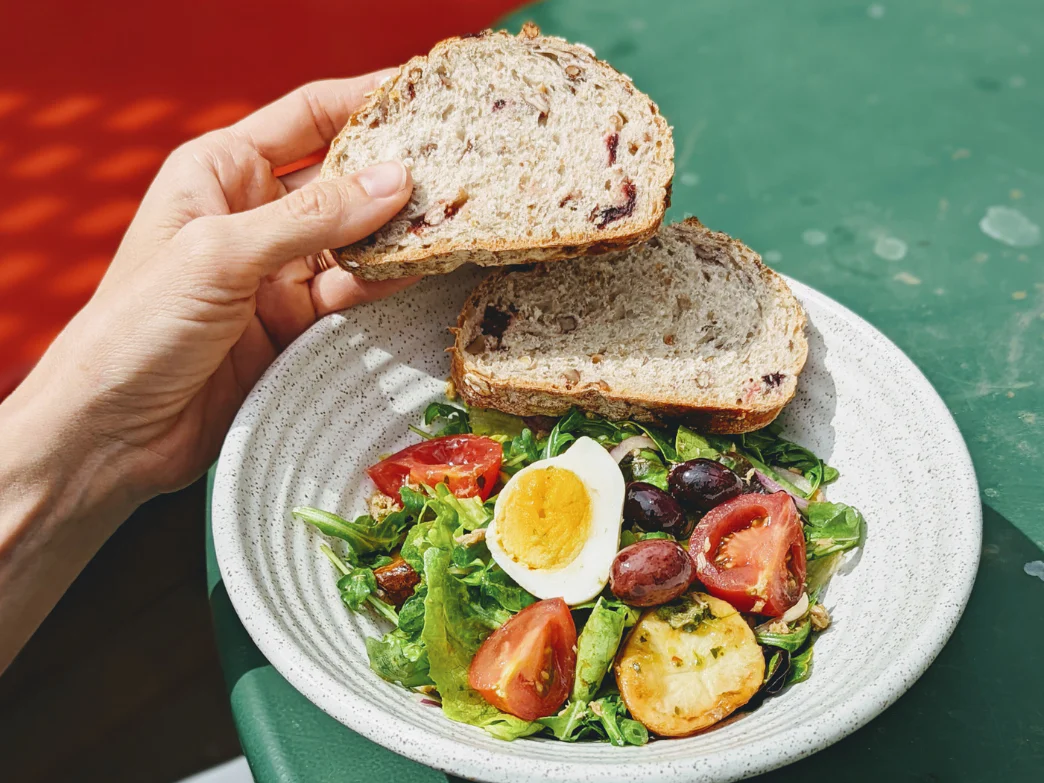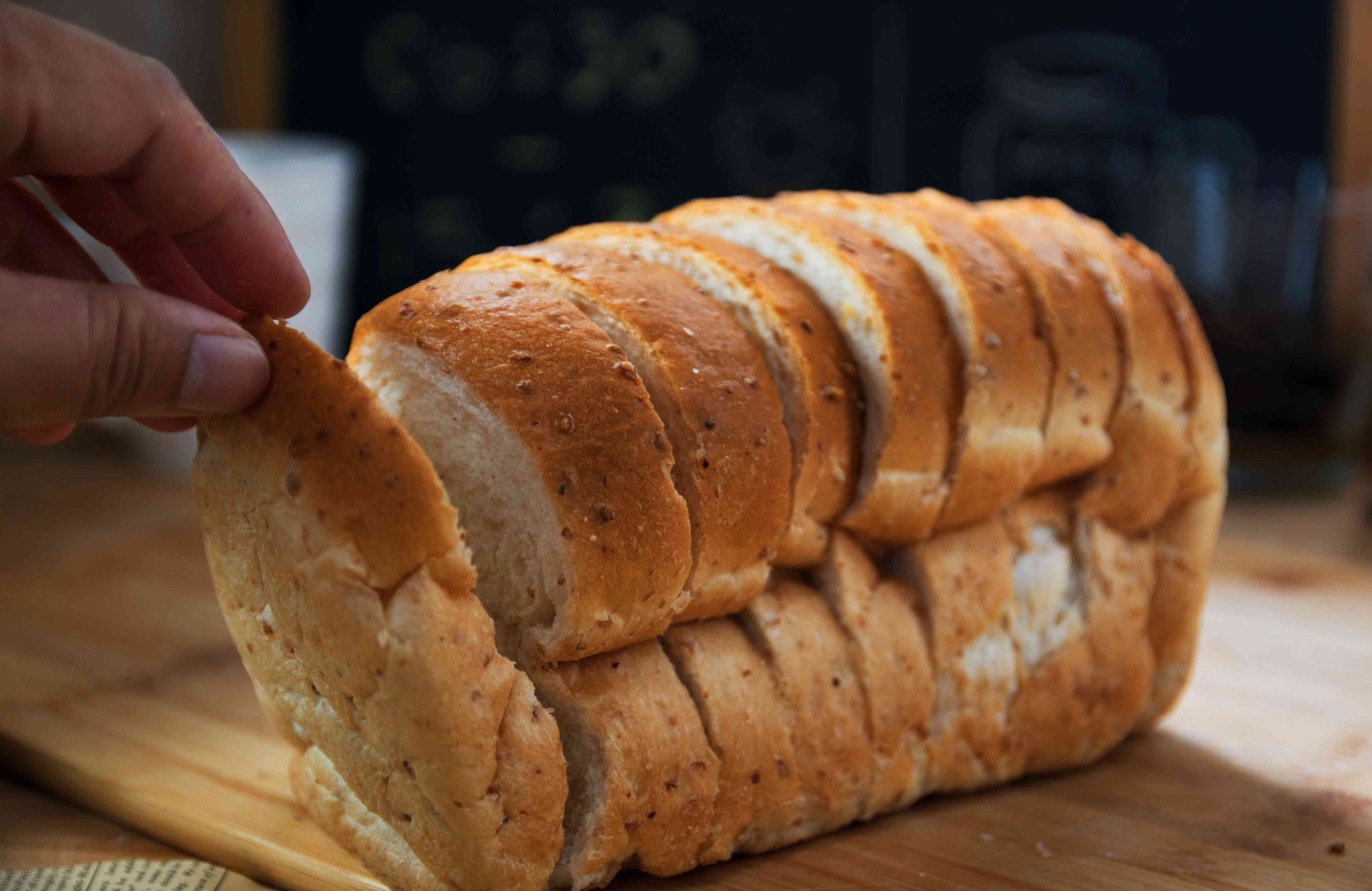Are you a bread lover who is also trying to lose weight? You’re not alone. Many people believe that bread is off-limits when it comes to weight loss, but I’m here to tell you that you can still enjoy your favorite staple and shed those pounds. The key lies in understanding how many slices of bread you can include in your daily diet while still achieving your weight loss goals.

In this article, we’ll share the optimal number of slices of bread you can include in your daily diet to support your weight loss goals. I’ll also provide you with some general guidelines to help you make informed choices, and recommend specific breads that are best for weight loss.
Contents
How Many Slices of Bread a Day for Weight Loss?
There’s no one-size-fits-all answer to how many slices of bread you can eat per day for weight loss as it depends on several factors:
Individual needs:
- Calorie needs: Consider your overall calorie intake and adjust bread consumption accordingly. A general rule for weight loss is a 500-calorie deficit daily. For example, if you need 2000 calories, and one slice is 80 calories, you could have 2-3 slices.
- Activity level: If you’re active, you burn more calories and may have slightly more wiggle room for bread.
- Body weight: People with higher weights generally need more calories, potentially allowing for more bread in their diet.
Type of Bread:
- Whole-wheat bread: This boasts lower glycemic index and more fiber, leading to slower digestion and increased satiety compared to white bread. Aim for whole-wheat options whenever possible.
- Number of slices: Size variations exist, so pay attention to individual slice weight or serving size instead of just counting slices.
Diet and Meal Planning:
- Overall dietary balance: Prioritize fruits, vegetables, whole grains, and lean protein while limiting processed foods and sugary drinks. Bread should fit within this balanced approach.
- Meal composition: Consider where bread fits in your meals. If it’s the primary carbohydrate source, you might want to limit it slightly. Pair it with protein and healthy fats for balanced meals.
Benefits of Eating Bread
Here are some key advantages of incorporating bread into your diet:

1. Satiety and portion control: Bread can help promote a feeling of fullness, which can prevent overeating and aid in portion control. The fiber content in whole grain breads can make you feel satisfied and reduce the likelihood of snacking on unhealthy foods.
2. Nutrient density: Whole grain breads are a good source of essential nutrients, such as vitamins, minerals, and dietary fiber. These nutrients are vital for overall health and can contribute to a well-balanced diet.
3. Energy for physical activity: Bread, especially whole grain varieties, provides carbohydrates that serve as fuel for physical activity. Engaging in regular exercise is crucial for weight loss, and bread can provide the energy you need to stay active and reach your fitness goals.
4. Versatility and convenience: Bread is a versatile food that can be included in various meals and snacks. Whether it’s a sandwich, toast, or a healthy bruschetta, bread can be a convenient option for quick and satisfying meals.
What bread should I eat?
When it comes to including bread in your weight loss diet, choosing the right type of bread is key. Here are some guidelines to help you make informed choices:

1. Whole Grain Bread: Opt for whole grain bread instead of refined white bread. Whole grain bread is higher in fiber and contains more essential nutrients, making it a healthier option. Fiber helps promote satiety, keeping you fuller for longer and reducing the chances of overeating.
2. Portion Control: Pay attention to the portion sizes of bread you consume. It’s important not to go overboard. Stick to smaller or medium-sized slices and avoid excessive consumption. Remember, moderation is key.
3. Labels Matter: Read the labels to ensure you’re making the best choice for your health. Look for breads that list whole grains as the first ingredient. Avoid breads with added sugars and artificial additives.
4. Gluten Sensitivity: If you have a gluten sensitivity or intolerance, there are plenty of gluten-free bread options available. Just be sure to choose ones that are made from whole grains or alternative flours to maintain nutritional value.
5. Variety and Enjoyment: Incorporating a variety of bread types into your diet can make mealtime more exciting and enjoyable. Experiment with different whole grain breads, such as rye, sprouted, or multi-grain, to find what works best for you.
Frequently Asked Questions
Can bread be included in a weight loss diet?
Yes, bread can be included in a weight loss diet. It is important to choose whole grain bread over refined white bread as it is higher in fiber and nutrients. Portion control is also crucial. Aim for no more than one slice of bread per day, and make sure to read labels to avoid added sugars and artificial additives.
Can eating bread help me lose belly fat?
While cutting out excess refined carbs like bread can aid in losing belly fat, incorporating nutrient- and fiber-rich carbohydrates in moderation can still be part of a weight loss diet. Focus on consuming vegetables and low-glycemic fruits for healthier carb choices.
Are there any other tips for weight loss besides including bread?
Other tips for weight loss include counting calories, increasing water intake, boosting protein consumption, reducing refined carb intake, incorporating weightlifting, increasing fiber intake, following a consistent sleep schedule, and adding cardio to your routine.

Hello, I’m Ravindra. Over the years, I’ve immersed myself deeply into the world of fitness and health, transforming both my body and mind. Writing has allowed me to share my journey, insights, and expertise with those just starting out and seasoned fitness enthusiasts alike. Beyond just routines and diets, I believe in inspiring others to adopt a holistic approach to well-being.
